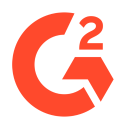I Built A $20K/Month AI App In Less Than 1 Year
Hello! Who are you and what business did you start?
Hello, my name is Nick and I'm the founder of Textero, an AI-powered writing assistant. Our company is young—very young, because I started it in 2023.
I built it because, while the market for AI tools was rapidly developing, there was still a need for more tools tailored to specific needs. That’s why our product's goal is to transform how people learn by making studying more personalized and accessible. I personally believe that cooperation between humans and AI can produce incredible results. It saves time and allows for more creativity, which is exactly how Textero works.
Textero currently generates an average monthly revenue of $20,000, although some months can be higher or lower. We all understand when students experience high and low seasons.

How did you come up with your business idea?
I started

Download the report and join our email newsletter packed with business ideas and money-making opportunities, backed by real-life case studies.

Download the report and join our email newsletter packed with business ideas and money-making opportunities, backed by real-life case studies.

Download the report and join our email newsletter packed with business ideas and money-making opportunities, backed by real-life case studies.

Download the report and join our email newsletter packed with business ideas and money-making opportunities, backed by real-life case studies.

Download the report and join our email newsletter packed with business ideas and money-making opportunities, backed by real-life case studies.

Download the report and join our email newsletter packed with business ideas and money-making opportunities, backed by real-life case studies.

Download the report and join our email newsletter packed with business ideas and money-making opportunities, backed by real-life case studies.

Download the report and join our email newsletter packed with business ideas and money-making opportunities, backed by real-life case studies.












































